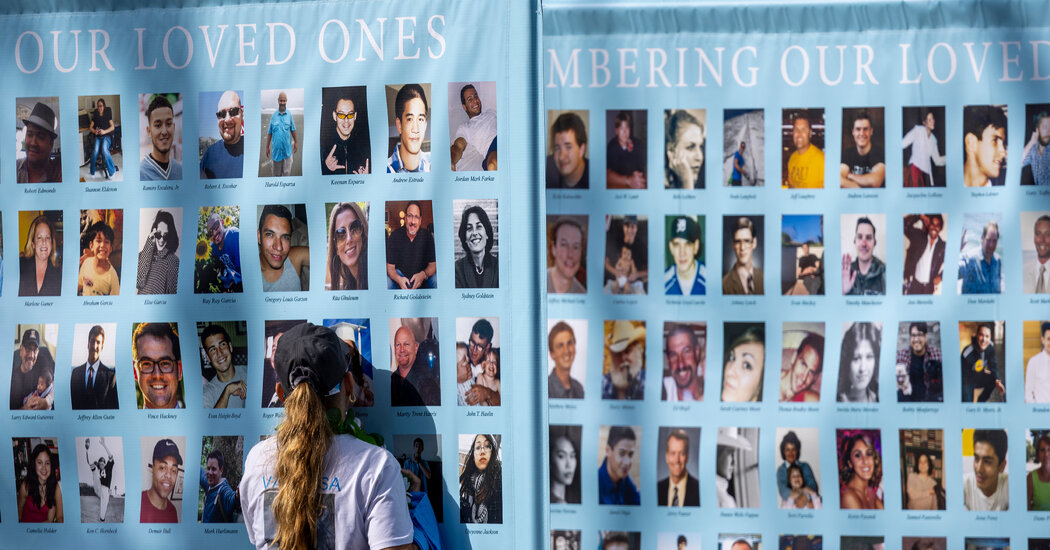
The rate of suicides involving guns in the United States has reached the highest level since officials began tracking it more than 50 years ago, according to a new report from the Centers for Disease Control and Prevention.
The rate increased by more than 10 percent in 2022 compared with 2019, and in some racial and ethnic groups, the rise was significantly steeper, especially among Native Americans. Overall, about 27,000 of 50,000 suicides were carried out by gun in 2022.
Federal researchers involved in the analysis suggested that the coronavirus pandemic might have exacerbated many of the known risk factors for suicide generally, which include social isolation, strained relationships, and drug and alcohol disorders. At the same time, outside experts noted, the increased rates also correlated with another trend seen during the acute phase of the pandemic: rising gun sales.
“When there are more firearms, there are more firearm suicides,” said Michael Anestis, the executive director of the New Jersey Gun Violence Research Center.
The rate of suicide by any method has increased by one-third in the past two decades, according to federal data. More than half of those now involve firearms, the report said, a figure that translates to about one every 20 minutes.
On the flip side, more than half of all gun deaths in the United States are suicides.
To examine recent trends, federal researchers at the C.D.C.’s National Center for Injury Prevention and Control compiled and analyzed demographic and mortality data from the National Vital Statistics System and the Census Bureau. (Statistics from 2022, the most recent available data, are still considered preliminary.)
They found that the firearm suicide rate in 2022 (8.1 per 100,000) was the highest level since at least 1968, the earliest year on record in the Centers for Disease Control and Prevention data.
Suicide rates have increased across all racial and ethnic groups since 2019, but the degree of change differed drastically. American Indian and Alaska Native people, for example, saw the sharpest spike: a 66 percent increase in the rate of firearm suicides from 2019 to 2022 (to 10.6 from 6.4 per 100,000). The rate among Black people increased by 42 percent (to 5.3 from 3.8), and among Hispanic and Latino people by 28 percent (to 3.3 from 2.5). Asian and Pacific Island people saw firearm suicide rates increase by about 10 percent (to 1.9 from 1.7).
White people experienced the smallest bump — a 9 percent increase since 2019 — but maintained the highest overall rate of firearm suicides (11.1 per 100,000 in 2022).
Sarah Burd-Sharps, the senior director of research at Everytown for Gun Safety, a nonprofit group that aims to prevent gun violence, said the unparalleled increase in the rate among American Indian and Alaska Native communities could be caused by disparities in access to mental health care. She said the high levels of job loss and financial strains in Black and Latino communities during the pandemic could have contributed to the rise in those groups.
Dr. Anestis of the New Jersey Gun Violence Research Center said he was “sadly not surprised,” since the demographic groups driving the surge in firearm sales did not match the stereotype of “older, white, male gun owners.” Research showed that about half of first-time buyers during the pandemic were female, and an increasing proportion were Black and Hispanic.
Research shows that gun owners are no more likely than others to have suicidal thoughts, but surveys have showed that people who planned to purchase firearms during the pandemic were more likely to have thought recently about suicide than people without plans to purchase.
“When firearms are going into new types of communities, and into homes where people have had the propensity to think about suicide, they are suddenly gaining access to the single most lethal method,” Dr. Anestis said.
Researchers at the C.D.C. called for stronger efforts to reduce such suicides by addressing underlying inequities. Some states are working to develop safe options for storing guns away from a person’s home during times of distress.
Dr. Anestis is planning a project that could train barbers, faith leaders, bartenders and even divorce lawyers on how to help promote those options to people who are discouraged, “much like knowing who’s going to hold your car keys when you’ve had too much to drink,” he said.
“The goal is not to infringe upon their autonomy as an owner,” he said. “It’s to make sure that, in their worst moment, it’s not right there at their fingertips.”
If you are having thoughts of suicide, call or text 988 to reach the 988 Suicide and Crisis Lifeline or go to SpeakingOfSuicide.com/resources for a list of additional resources. Go here for resources outside the United States.



